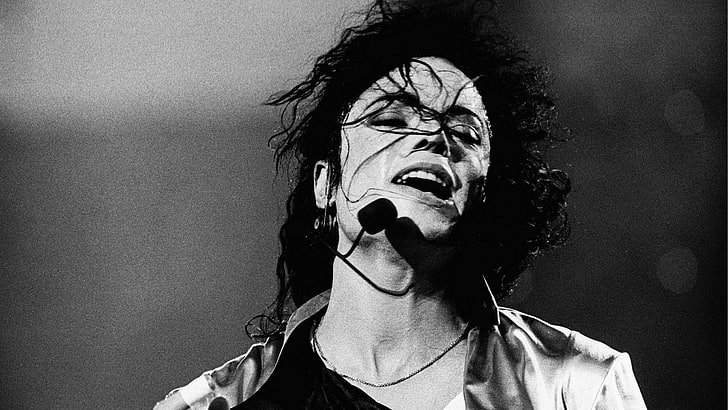Michael Jackson and His Influence on Modern Dance

A God-gifted performer since the age of five, Michael Jackson is one of the most popular pop singers in the history. His 1983 album, Thriller, sold forty million copies, making it the biggest seller of all time. Through his record albums and music videos he created an image imitated by his millions of fans.
Michael Joe Jackson was born in Gary, Indiana, on August 29, 1958, the fifth of Joe and Katherine Jackson's nine children.
The house was always filled with music. Jackson's mother taught the children folk and religious songs, to which they sang along.
Jackson’s father Joseph had played guitar in a local group called the Falcons; his mother Katherine was a country music enthusiast who instilled in her eight children a love of singing. Joseph aimed to turn his five male children - Jackie, Tito, Jermaine, Marlon, and Michael into musical stars. By 1964, before Michael's sixth birthday, he had formed them into the Jackson 5. The group played in local arenas and travelled throughout the Midwest performing before they were noticed. Attracting the attention of hit singer Gladys Knight and pianist Bobby Taylor not Diana Ross as some have claimed- the Jackson 5 were signed in 1968 to the Motown label, whose roster of youthful black acts had reliably been generating hits for several years.
Michael's exuberant vocals defined such catchy Jackson 5 hits as "I Want You Back," "The Love You Save," "ABC," and "I'll Be There," all of which hit Number One in 1970. He released three albums for Motown as a solo artist, with singles such as "Ben," "Rockin' Robin," and "Got to Be There" reaching top chart levels. With Michael as lead vocalist and choreographer, the group toured extensively, giving audiences electrified shows that made the Jackson 5 more popular with each new show.
Solo Career
The Jacksons' fame and popularity soon began to spread. While performing at the Apollo Theater in New York City's Harlem neighbourhood in 1968, Motown recording artist Gladys Knight (1944–) and pianist Billy Taylor discovered them. Later that year singer Diana Ross (1944–) became associated with the boys during a "Soul Weekend" in Gary. With Ross's support, the Jacksons signed a contract with Motown Records. Berry Gordy (1929–), the famous head of Motown, took control of the Jacksons' careers.
By 1970 the group, known as the Jackson Five, was topping the charts and riding a wave of popularity with such hits as "ABC," "The Love You Save," and "I'll Be There," each of which sold over one million copies. The group also appeared on several televised specials, and a Jackson Five cartoon series was created. Gordy quickly recognized Michael's appeal and released albums featuring him alone. These solo albums sold as well as those of the Jackson Five.
The Jacksons, minus Jermaine, left Motown after a dispute over artistic control and signed with CBS's Epic label in 1976.
Motown sued and the Jackson 5 lost its name. The brothers now known as The Jacksons added to the group was youngest brother, Randy went on to be successful on the Epic label with such hits as "Blame It On The Boogie," "Shake Your Body," and "Heartbreak Hotel," all of which were written by various Jackson brothers.
As the Jackson 5, the brothers appeared in their first TV special, Goin' Back to Indiana, an ABC network presentation that also starred comedians Bill Cosby and Tom Smothers. ABC also aired a Saturday morning animated series The Jackson Five which featured the Jacksons' singing voices. As ‘The Jacksons’, they performed in Las Vegas with their sisters Rebbie, La Toya, and Janet.
In 1978 Michael Jackson appeared in The Wiz, an African American version of The Wizard of Oz. He sang the only hit from the film's soundtrack album ("Ease On Down the Road") in a duet with the star, Diana Ross. His success as the Scarecrow was a preview of what was to come in his videos, for Jackson seemed to care most about dancing. (He later dedicated his autobiography [the story of his one's own life] to dance legend Fred Astaire [1899–1987], and the autobiography's title, Moonwalk, refers to a dance that Jackson made popular.)
While working on The Wiz, Jackson met producer Quincy Jones (1933–). They worked together on Jackson's 1979 album Off the Wall, which sold ten million copies and earned critical praise. In 1982 Jackson and Jones again joined forces on the Thriller album.
Thriller fully established Jackson as a solo performer, and his hit songs from the album- ‘Beat It’, ‘Billie Jean’ and ‘Thriller’ made him the major pop star of the early 1980s. The success of Thriller (with forty million copies sold, it remains one of the best-selling albums of all time) and the videos of its songs also helped Jackson break the colour barrier imposed by radio stations and the powerful music video channel MTV. By 1983 Jackson was the single most popular entertainer in America.
In 1985 Jackson reunited with Quincy Jones for USA for Africa's "We Are the World", which raised funds for the poor in Africa. Jackson's next two albums, Bad (1987) and Dangerous (1991), were not as hugely successful as Thriller, but Jackson remained in the spotlight throughout the 1980s and into the 1990s. In 1992 he founded "Heal the World" to aid children and the environment. In 1993, he was presented with the "Living Legend Award" at the Grammy Awards ceremony and with the Humanitarian (one who promotes human welfare) of the Year trophy at the Soul Train awards.
The Dancing Revolution
When the world saw Michael Jackson do the moonwalk for the first time, it was in a live solo performance of “Billie Jean,” following NBC’s celebration of 25 years of Motown. The move, though, was already popular among West Coast street dancers who were using a precise, mechanized style of movement called popping. The style included sequences of pulsing or stop-and-start movements.
According to Rolling Stone, “No single artist … shaped, innovated or defined the medium of ‘music video’ more than Michael Jackson.” Back in the 1980s and early 1990s, MTV had only one format- music videos and that genre really took off when Jackson burst on the scene in 1983 with his musical hit “Billie Jean.” Prior to his arrival on MTV, most videos were merely visual promos for artists’ songs, and in some cases the visual side of the promos detracted from the music. Michael Jackson, on the other hand, took his incredible music and added story lines, special effects, cinematography, and amazing choreography. He created high-budget brief movies highlighting both music and dance.
Almost every fan tried to dance like him, but very few could pull it off. Some of Jackson’s dance moves appear to defy the laws of gravity. In one move featured in his 1987 music video “Smooth Criminal,” he pitches forward 45 degrees, with his body straight as a rod and his shoes resting on the stage and holds the position. That is not how the human body works! How did Michael Jackson do it? Was it talent, magic, or both? Three neurosurgeons from the Postgraduate Institute of Medical Education and Research in Chandigarh, India- Nishant S. Yagnick, Manjul Tripathi, and Sandeep Mohindra set out to examine the antigravity tilt introduced in “Smooth Criminal” from a neurosurgeon’s point of view.
First, Yagnick et al. walk us through some basics of spinal biomechanics to show just how impressive is the feat. Even the strongest of dancers can only maintain a 25- to 30-degree forward tilt from the ankle. Admitted fans of Jackson, the neurosurgeons document how the antigravity tilt was accomplished, taking into account the talent and core strength of the artist, as well as his inventiveness and use of a patented aid, that together seem to move his body past human limits. They also warn other neurosurgeons of new forms of spinal injuries, as dancers follow Jackson’s example and attempt “to jump higher, stretch further, and turn faster than ever before.”
The full story on the antigravity tilt is published in a new article in the Journal of Neurosurgery entitled “How did Michael Jackson challenge our understanding of spine biomechanics?”
Approach to Dance
Michael Jackson’s dance style was influenced by a wide range of people, varying from R&B artists to even ballerinas. His influences included jazz, street dances and African American indigenous styles. Throughout his career, he was under no formal training, nor did he have any dance teachers supervising him, further affirming his natural talent.
He was completely self-taught and worked very much in isolation when it came to master his famous dance moves. He was creative in the way he brought different techniques of various dance styles together, taking whatever, he saw and liked in other dancers and making them his own. By fusing various styles and techniques, together with his own artistic creations, he introduced an entirely new dance style to the world.
“Michael Jackson was really good at doing the robot style and isolations. So, he incorporated that into the moonwalk,” said Jared Grimes, an entertainer and Broadway dancer.
Jackson made the move a national phenomenon- kids everywhere were imitating him. But the moment is a particular part of dance history because Jackson bridged the gap between West Coast street dance and the East Coast break dancers, who were part of the early days of hip-hop. The moonwalk fit perfectly into the physically demanding, almost gymnastic genre known for floor spins, fast footwork and named steps like the worm.
Even before the moonwalk, though, Jackson had changed the way that Americans interacted with dance.
Though many other classical and traditional forms of dance continue to thrive in their original forms; modern elements that great artists such as Michael Jackson infused with the classical forms still hold its gravity. It can be affirmed without a shadow of doubt that Michael Jackson transformed a significant part of the genre of modern dance in the world today.















































